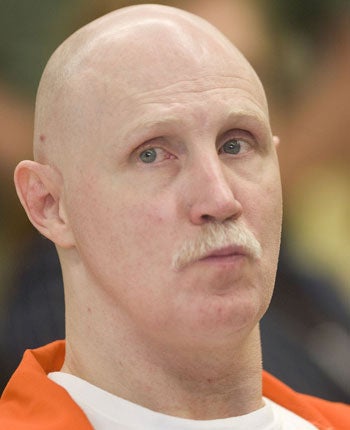The doomed life of a troubled killer who never had a chance


Your support helps us to tell the story
From reproductive rights to climate change to Big Tech, The Independent is on the ground when the story is developing. Whether it's investigating the financials of Elon Musk's pro-Trump PAC or producing our latest documentary, 'The A Word', which shines a light on the American women fighting for reproductive rights, we know how important it is to parse out the facts from the messaging.
At such a critical moment in US history, we need reporters on the ground. Your donation allows us to keep sending journalists to speak to both sides of the story.
The Independent is trusted by Americans across the entire political spectrum. And unlike many other quality news outlets, we choose not to lock Americans out of our reporting and analysis with paywalls. We believe quality journalism should be available to everyone, paid for by those who can afford it.
Your support makes all the difference.If ever a man was destined to be added to the list of the 1,217 people executed since capital punishment was restored in the US in 1976, it was surely Ronnie Lee Gardner.
To describe his life as troubled would be an understatement. His father, who used to beat him, was a heavy drinker and frequently unemployed. Ronnie Lee was one of nine children in a family which moved constantly around Salt Lake City before his parents split up. At four, he contracted meningitis, which may have damaged his brain, and contributed to his violent behaviour.
His siblings were little help either. According to a lengthy profile in The Salt Lake Tribune newspaper this month, one of his older brothers molested him. At the age of six, Ronnie Lee had learnt to get highs from sniffing glue and petrol. When he was 10, there were reports he had swapped an air gun for marijuana.
By then his criminal career was well under way. When Ronnie Lee's mother re-married, it was to a burglar. The boy apparently idolised his new stepfather, serving as lookout on some of the robberies. He was also shoplifting on his own account. All the while his drug habits were escalating, to methamphetamine, cocaine and heroin. At one point, he and one of his brothers lived with a paedophile who performed sex acts on them.
By then Ronnie Lee was in and out of juvenile prison and other state institutions. By all accounts he was a bright and handsome child. But he was unruly and rebellious against any authority. "A nasty little bugger," was how he once described himself. When in custody, he was often violent – and always trying to escape.
His emotional life was equally undisciplined. By the time he was 19, Gardner had two children of his own, with a girlfriend who would stick with him for seven years. But he barely had time to witness the arrival of his second child, a son, in February 1980, before he was convicted of robbery and sent to Utah's state prison at Draper for the first time. Gardner escaped and committed more crimes while on the run before he was recaptured. But in 1984, inevitably, he escaped yet again.
By then, as The Tribune noted, about the only crime he had not been charged with was murder. The omission was soon corrected. That year, Gardner was charged with killing barman Melvyn Otterstrom. During his trial in 1985, he attempted to escape, shooting dead a lawyer, Michael Burdell, with a gun slipped to him by a female accomplice. In October 1985, he was sentenced to death for the second murder.
His appeals process was exceptionally long, and Gardner himself came to tire of it. He knew he had an explosive temper. "Eventually the prison will put me in predicaments where I am going to end up killing somebody else," he told a hearing in 1999.
Among the many disturbing features of protracted stays on death row in America is that sometimes the individual who is finally executed is very different from the person who committed the crime decades earlier.
Gardner too may have changed during the quarter century he spent behind bars waiting to die. His ambition was to start an organic farm project, where troubled children could have a second chance at life.
Join our commenting forum
Join thought-provoking conversations, follow other Independent readers and see their replies
Comments